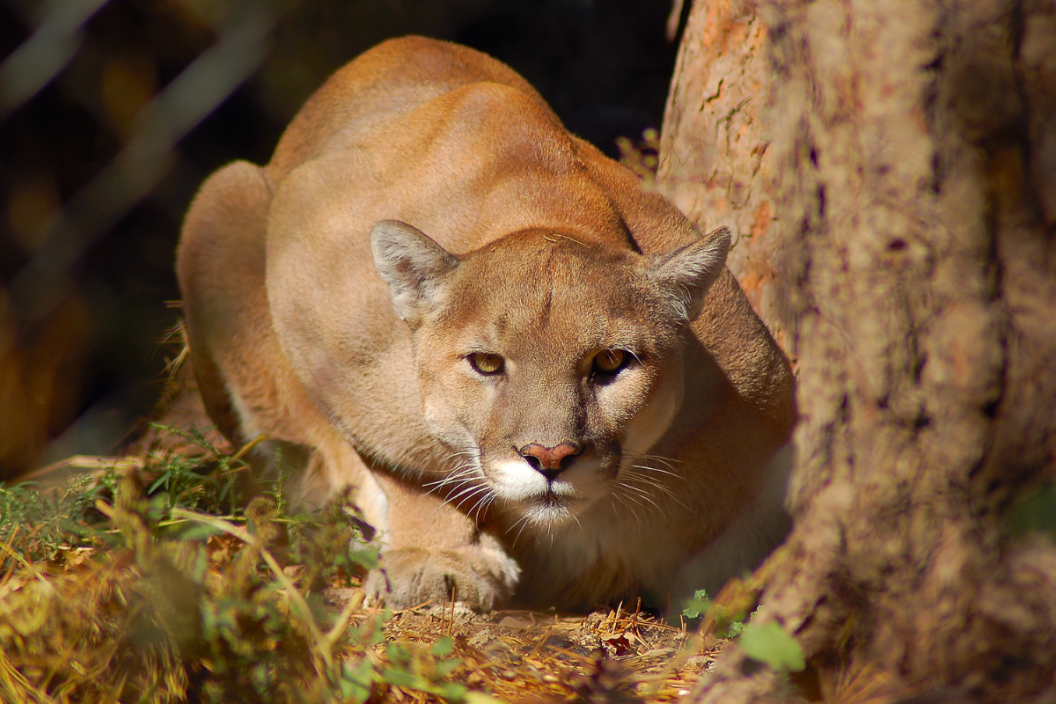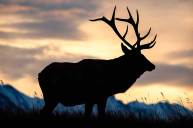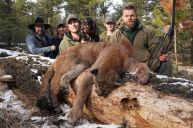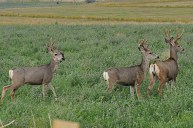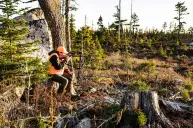Mountain lions (also known as pumas, cougars, and about 40 other names in English) are one of North America's most elusive predatory big game animals. Not many hunters consider going after these big cats, but many also enjoy it. If you've been considering a cougar hunt, we've got you covered with all the information you might need to start planning for a lion hunt today.
Mountain lion populations exist in many states. But only some states have one large enough to make hunting sustainable. Thus, only a few places in the United States allow the hunting of these animals.
Idaho, Utah, Wyoming, Montana, Nebraska, Colorado, New Mexico, Oregon, Washington, North Dakota, South Dakota, Texas, Arizona, and Nevada allow some form of mountain lion hunting. The Canadian provinces of British Columbia and Alberta also have seasons.
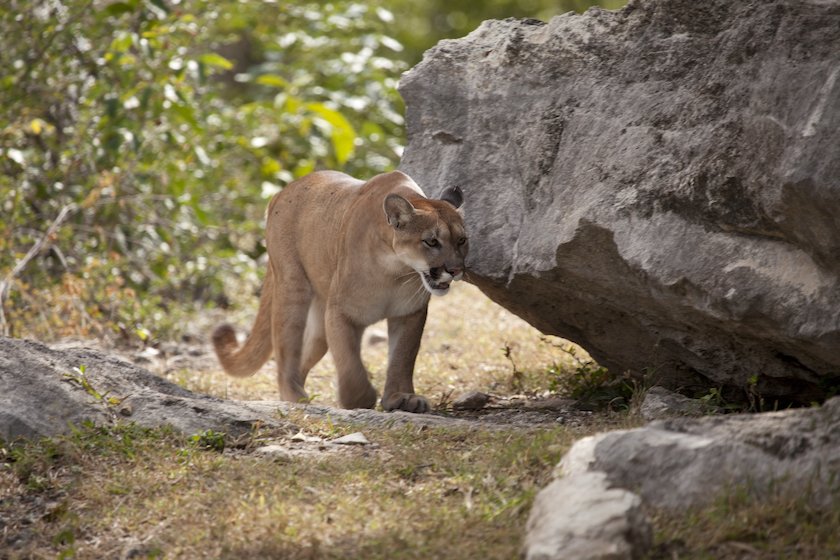
Fly_Fast via Getty Images
Some hunting seasons are extremely limited and states dole out licenses via a draw system. South Dakota established an experimental season in 2005, and is open to residents only. The harvest numbers are meager. In 2019, South Dakota Game and Fish set a harvest limit of 60 mountain lions, but hunters took 21. Nebraska also held its first experimental season in 2019. While the quota was eight cats, hunters took only one.
Fees for hunting licenses vary by state, but for most locations, you're looking at anywhere from $12 to $50 for residents and $180-$390 for non-residents. For most of the top lion-hunting states, places like Montana, Utah, or Arizona, you can get a tag over the counter.
As for the best states to hunt, Montana, Idaho, Colorado, and Arizona are considered tops as far as success rates and trophy mountain lion numbers are concerned. These are also more accessible states to get a license if you're visiting from out of state.
When is Mountain Lion Hunting Season?

moose henderson via Getty Images
Most North American big game species, like black bears, whitetails, or mule deer, have specific hunting seasons similar from state to state. This fact makes hunting mountain lions seem even more confusing because it's as if there is almost no rhyme or reason as to when seasons are open for these big cats. Some states, like Arizona and South Dakota, have an open season all year round.
In Wyoming, the season runs from Sept. 1 to Aug. 31, but in Utah, the season runs from Nov. 9 to March 31. In many states, the season dates are often further broken down depending on the hunt area you plan to visit.
Ready to feel more confused? Some states have seasons that can end suddenly and unexpectedly if they meet harvest quotas. They sometimes base quotas on sex. Once hunters harvest a certain number of female or male lions, that's it for the year.
Some states close individual seasons by hunt area as they meet these quotas. Before you hunt mountain lions in one of these states, please do your homework on past harvests to ensure you don't buy a license for an area only to have it close before your trip.
How to Hunt Mountain Lions
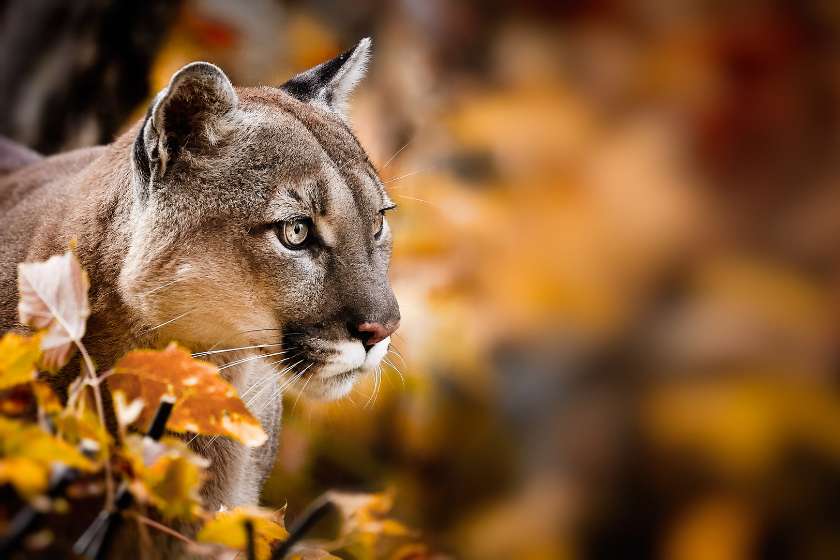
Evgeny555 via Getty Images
Hunting mountain lions is difficult. They don't like humans and will go out of their way to avoid them. They're also brilliant. They know when you're pursuing them. It is possible to spot and stalk these animals, but mountain lion hunters should be prepared for this style to test their skills to the absolute limit. These animals can move fast, and they range over huge areas. That big Tom you spotted might be gone by the time you climb that ridge.
So it's no wonder dogs help with most mountain lion hunting is done with the help of dogs. These big cats are so stealthy it's hard to pick up a lion track. But dogs can do it quickly. The dogs tree the animal or corner it on a rocky cliff where the hunter can get a shot.
We'd recommend watching a video of one of these hunts before you do it. This style isn't for everyone. Dog hunting is legal in some states, too. The subject has been one hot debate in Oregon in particular. At one point, the state banned the use of dogs before trying to reverse it two years later. Dog hunting remains illegal for mountain lions there. Some states mandate that mountain lion hunters use an outfitter. Even if the state you're hunting does not, it's not a bad idea.
For one, it's challenging to figure out how to hunt these animals without experience. Next, a guide is more likely to be an expert houndsmen and to have specially trained animals for this hunting style. Third, a hunting guide makes for a good backup. They will know what to do if things don't go as planned. For instance, let's say you've got a wounded, angry puma who has holed up in a cave. What do you do? A good guide will likely have a safe solution.
One guide site I saw offered a reduced rate hunt for the following season if you were unsuccessful in your first outing with them. Not a bad idea if you want to get the most bang for your buck.
Another great thing about hiring a guide is their knowledge of the rules and regulations. Sifting through info on a state wildlife agency's website to find what tags you need to buy for a specific hunt area can be frustrating. A guide can tell you exactly which ones to buy, with no guesswork required.
Gun Caliber for Mountain Lions

GarysFRP via Getty Images
Let's talk gear. You'll want a round with a decent amount of firepower for rifles. We'd recommend something like .300 Savage or Winchester Magnum, 300 Blackout, .300 Lapua, .308 Winchester, .30-30, .30-06, .45-70 Government and .444 Marlin.
You may think some of these are overkill for the animal's size. That's fair enough since many lions don't get much more significant than 110-140 pounds. But keep in mind these are dangerous animals. Ideally, you want to put the animal down quickly and cleanly with one shot. Why take chances or let the animal suffer more than necessary? There is disagreement over what a good lion round may be for handguns. We'd say going with something at least as significant as .44 Magnum is better to be safe than sorry.
Cougars are not animals you want to mess around with when taking the shot. A wounded lion could get desperate and injure dogs, your hunting buddy, or yourself severely. Make sure someone is backing you up before you take the shot.
Most standard archery gear used for big game will work for mountain lions. Remember that you will likely aim your shots above your head, either in a tree or high up in the rocks. Most of us are used to shooting down from a treestand and not up. Ensure you find a safe way to practice this type of shot weeks before your trip.
As for other gear you may need, make sure you have a quality pack to hold all your gear. A good pair of optics is a must. Nature perfectly designed lion coats to blend into the landscape, and spotting them can be quite a chore.
Lastly, get a solid pair of comfortable footwear made for hiking. You will probably have to do a lot of moving at high elevations over extremely rough terrain. Please don't skimp on your feet, or you'll regret it later!
Other Considerations
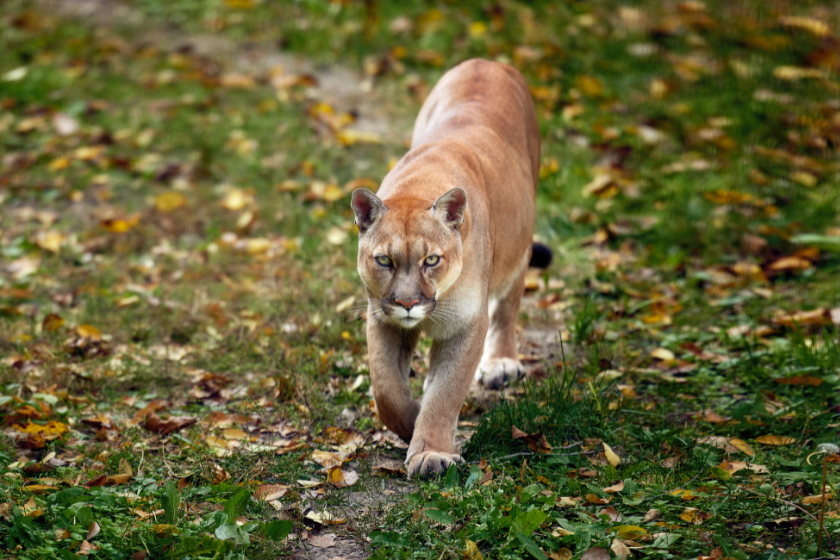
EvgeniyQ via Getty Images
When successful in your harvest, be aware that you will likely have to check the animal in with a state wildlife agency. Unlike many other big game animals, checking in a mountain lion is almost always mandatory. State biologists want to gather as much information as possible about these animals. They will want to look over your kill before you butcher the meat or take it to a taxidermist.
Make sure you know where the check stations are for the state you are hunting. Most states mandate you get your lion checked in within 24 hours of the harvest. That means you may have to double-time it if you're in a remote area. Some states also require you have some proof of the animal's gender when you check in, so double-check to see what they will take as proof before you field dress the animal.
Lastly, we must emphasize that you shouldn't hunt mountain lions alone. Cougars are dangerous animals often found in very remote areas. It never hurts to have a buddy watching your back.
This article was originally published on January 20, 2022.
For more outdoor content from Travis Smola, follow him on Twitter and check out his Geocaching and Outdoors with Travis YouTube channels.
